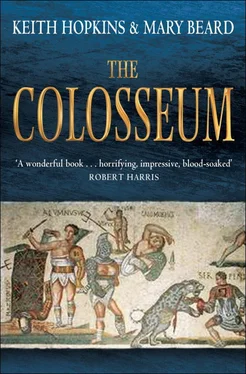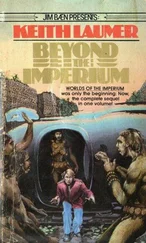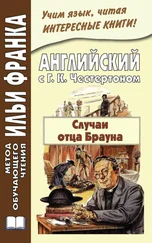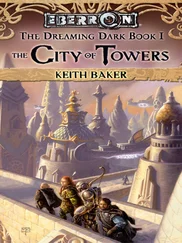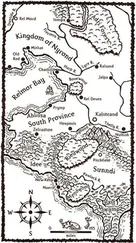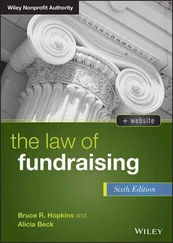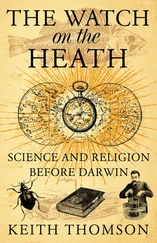Keith Hopkins - The Colosseum
Здесь есть возможность читать онлайн «Keith Hopkins - The Colosseum» весь текст электронной книги совершенно бесплатно (целиком полную версию без сокращений). В некоторых случаях можно слушать аудио, скачать через торрент в формате fb2 и присутствует краткое содержание. Город: London, Год выпуска: 2011, ISBN: 2011, Издательство: Profile Books, Жанр: История, на английском языке. Описание произведения, (предисловие) а так же отзывы посетителей доступны на портале библиотеки ЛибКат.
- Название:The Colosseum
- Автор:
- Издательство:Profile Books
- Жанр:
- Год:2011
- Город:London
- ISBN:9781846684708
- Рейтинг книги:3 / 5. Голосов: 1
-
Избранное:Добавить в избранное
- Отзывы:
-
Ваша оценка:
- 60
- 1
- 2
- 3
- 4
- 5
The Colosseum: краткое содержание, описание и аннотация
Предлагаем к чтению аннотацию, описание, краткое содержание или предисловие (зависит от того, что написал сам автор книги «The Colosseum»). Если вы не нашли необходимую информацию о книге — напишите в комментариях, мы постараемся отыскать её.
The Colosseum — читать онлайн бесплатно полную книгу (весь текст) целиком
Ниже представлен текст книги, разбитый по страницам. Система сохранения места последней прочитанной страницы, позволяет с удобством читать онлайн бесплатно книгу «The Colosseum», без необходимости каждый раз заново искать на чём Вы остановились. Поставьте закладку, и сможете в любой момент перейти на страницу, на которой закончили чтение.
Интервал:
Закладка:
The irony is, then, that the standard modern name for Vespasian’s great amphitheatre is one that makes it more of a memorial to Nero than to the dynasty that replaced him. So much so that popular imagination often sees it as a Neronian monument and films (from Cecil B. DeMille’s Sign of the Cross to Mervyn Le Roy’s Quo Vadis ) have blithely envisaged Nero presiding over the massacre of Christians there – almost two decades before it would in fact have been built. For us the Colosseum must offer more than a political message about the Roman people’s stake in the city and its empire. It embodies an important lesson in the ambiguities of memory, obliteration and amnesia. Wiping an emperor out of the landscape was more difficult than it may seem; as always, the harder you try, the more you risk drawing the attention of history to what you are trying to remove. Even without its Neronian-medieval name, Vespasian’s amphitheatre was always likely to be remembered as the monument which stood on the site of Nero’s lake.
EMPEROR AND PEOPLE
The symbolic power of the Colosseum in ancient Rome depended also on political issues that went far beyond the immediate circumstances of its construction. It came to be seen as one of the most important arenas (in the metaphorical as well as the literal sense) in which the emperor came face to face with his people – and to stand as a symbol of the encounter between autocrat and those he ruled. To understand how and why this was so, we need to consider briefly the wider context of the history of Roman politics – and the history of amphitheatres.
For us, the Colosseum is such a well-known part of the Roman skyline that it is easy to forget that, in the AD 70s, the construction of a huge stone amphitheatre in the centre of the city constituted a break with tradition. To be sure, other Italian and provincial cities in the Roman empire had long had amphitheatres of their own: for example, Pompeii (the earliest surviving amphitheatre from about 70 BC), Verona and Milan in Italy, Lyon in France, Merida in Spain and Carthage in Tunisia. And many more were to come as far afield as Jerusalem and London (where remains of the structure roughly contemporary with the Colosseum were discovered under the Guildhall in 1988). In Rome, however, before the Colosseum was built, people had generally watched gladiatorial shows in temporary structures. True, a Roman aristocrat in the reign of the emperor Augustus (31 BC to AD 14) had built a smallish amphitheatre at least partly in stone. But this was hardly grand enough for big shows (certainly the emperor Caligula is reported to have looked down his nose at it) and, in any case, like so much else in the capital, it had been burnt down in Nero’s great fire of 64. Standard practice was to build a wooden amphitheatre and take it down when the shows were over, or to make use of public buildings designed with other purposes in mind. Massive shows were occasionally given in the Circus Maximus, where chariot races were held, or in the so-called Voting Pens (or ‘Saepta’, the vast structure designed to accommodate mass voting by Roman citizens); but both venues were too large for normal displays. More often the gladiators performed in the Forum itself, the audience watching from wooden benches, which would have been dismantled at the end of the day.
Some of these temporary structures, and their fittings, were impressive enough in their own right. Pliny, the insufferable polymath and moraliser who was killed in the eruption of Vesuvius in AD 79, claims that the vast awning which Julius Caesar on one occasion used to cover the whole of the Forum, from one end to the other, was thought more ‘amazing’ than the gladiatorial show itself. And he tells in gleeful horror of a ‘mad fantasy in wood’ constructed by one of Cicero’s friends in the first century BC. This consisted in two adjacent semicircular wooden theatres, mounted on revolving pivots, which could be swivelled together to make a completely enclosed amphi theatre. Apparently, rather like coupling a train with the passengers on board, the whole operation of joining the two halves could be carried out with the spectators in their seats. Pliny was appalled: ‘Just imagine the people who have conquered the earth and have subdued the whole world, who govern tribes and kingdoms, who give their laws to the outside world, who are, you might say, a part of heaven on earth – just imagine them balanced on the contraption and applauding their own danger!’ Many more Romans, we suspect, would have been impressed at the splendid ingenuity of the device. Certainly, a poet in the reign of Nero imagines two rustics visiting the city overwhelmed by the sight of the emperor’s new wooden amphitheatre (even without the mechanical sophistication). They stand ‘rooted to the spot, mouth agape’ and (in terms reminiscent of Constantius’ reported reactions to the Colosseum) they reckon that it is almost as high as the Capitoline hill itself.
Of course, it was not – even if, as Pliny claimed, the largest tree ever seen at Rome, a vast larch that produced a log 40 metres long, was used in its construction. However extravagantly these earlier structures might be written up, in the late first century the Colosseum was something new for the city of Rome itself, in scale and permanence. Why did the innovation of a permanent amphitheatre take so long?
Traditionally, the Roman elite had always been chary of building in Rome a permanent monument to pleasure. It smacked too much of the luxury and decadence that Romans were anxious simultaneously to embrace and to avoid. More importantly yet, in the period of the Republic (conventionally dated from around 500 to 31 BC), when Rome was governed by elected officials or ‘magistrates’ and by a Senate made up largely of ex-magistrates – all of them wealthy aristocrats – senators may have been realistically afraid of providing a venue where the mass of citizens could express their views collectively and vociferously. It did not matter much to the Senate what citizens in Pompeii or Bologna thought or did (though a riot in the amphitheatre at Pompeii under the emperor Nero in AD 59 was severely punished by a ten-year ban on gladiator shows). But in Rome itself under the Republic, citizens had a much more direct influence over the passage of laws and the election of senators to further offices. At the same time, citizen voters were also then, potentially at least, soldiers. Their power to vote was a reflection of their power to fight, and vice versa. Mass gatherings, even if apparently for pleasure, must have seemed a dangerous commodity in the eyes of the elite.
That changed in significant ways with the advent of the Roman emperors. By the mid first century BC the Republican system of government had imploded. Out of a series of civil wars, juntas and dictatorships (culminating in the one-man rule and assassination in 44 BC of Julius Caesar), a more-or-less hereditary monarchy emerged, under the first emperor or ‘princeps’, Augustus. Under the emperors, the bulk of the army was dispersed along distant frontiers and soldiers were recruited predominantly from provincials. The citizens of Italy, with the vital exception of the Palace Guard, were effectively disarmed. And so it became practicable for the emperors to disenfranchise citizens living in Rome. Soon (even if not immediately with the advent of monarchy) elections were transferred from people to Senate. The once warlike ‘masters of the [Western] world’, as the Roman poet Virgil called them, were – to give it the most cynical spin – gratefully bribed with monthly distributions of free wheat and with frequent shows. This disenfranchisement of the Roman people was probably not part of a magnificently conceived master plan. But, however it evolved, it significantly increased monarchical power. The process is nicely symbolised by the history of the Voting Pens. The emperor Augustus, in honour of Rome’s long tradition of popular participation in politics, had erected these to upgrade the old Republican voting enclosure. They were the largest covered building in Rome. If initially citizen voting continued, however, by the end of the first century AD these Pens were no longer used for voting. Instead they had become a venue for large shows, as we have seen, and a giant supermarket for antiques. Democracy, in the traditional sense, was almost dead.
Читать дальшеИнтервал:
Закладка:
Похожие книги на «The Colosseum»
Представляем Вашему вниманию похожие книги на «The Colosseum» списком для выбора. Мы отобрали схожую по названию и смыслу литературу в надежде предоставить читателям больше вариантов отыскать новые, интересные, ещё непрочитанные произведения.
Обсуждение, отзывы о книге «The Colosseum» и просто собственные мнения читателей. Оставьте ваши комментарии, напишите, что Вы думаете о произведении, его смысле или главных героях. Укажите что конкретно понравилось, а что нет, и почему Вы так считаете.
